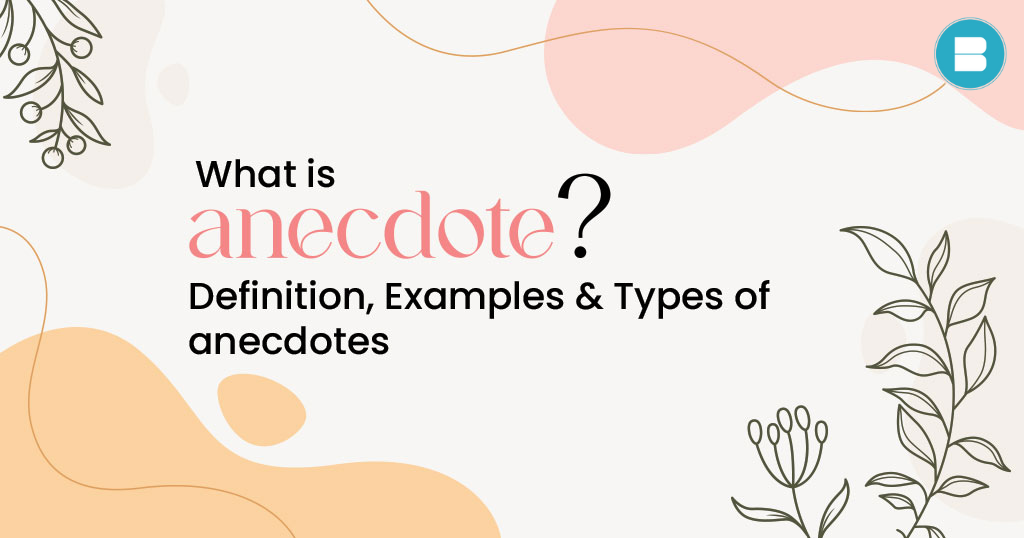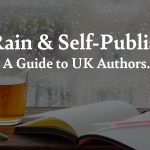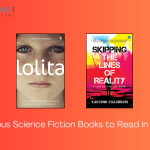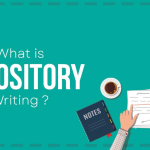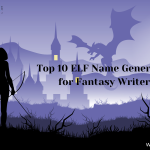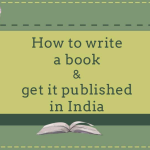What is an Anecdote?
The word anecdote comes from the Greek word anékdota, meaning “things unpublished.” Originally, it referred to secret or private stories now, it’s all about those small but powerful tales we tell in conversation or writing.
Anecdotes are powerful storytelling tools used in conversations, speeches, writing, and marketing to engage audiences. Whether you’re a writer, speaker, or content creator, understanding anecdotes can enhance your communication skills and make your content more relatable.
In this comprehensive guide, we’ll explore:
✔ What is an anecdote? (Definition & Characteristics)
✔ Different types of anecdotes (With examples)
✔ How and where to use anecdotes effectively
✔ Why anecdotes improve engagement and CTR
By the end, you’ll know how to craft compelling anecdotes that captivate your audience.
Example
“When I was 10, I tried baking cookies but accidentally used salt instead of sugar. My family still jokes about the ‘salty surprise’ to this day!”
This short story adds humor while making a personal connection.
You may also read: 10 Best Fiction Books Set in America You Must Read
Different Types of Anecdotes
1. Humorous Anecdote
A brief, amusing narrative told to lighten the atmosphere or provide entertainment is called a hilarious anecdote. It emphasizes the humorous side of ordinary circumstances and is frequently based on real-life experiences. These anecdotes are frequently used to engage the audience and organically elicit laughter in speeches, writing, or discussions.
Example:
“A man walks into a library and asks for a book on how to deal with failure. The librarian whispers, ‘Follow me… but quietly, I don’t want the self-help section to hear.’”
Best for: Speeches, social media posts, blog introductions.
2. Inspirational Anecdote
An inspirational anecdote is a short, powerful story that motivates or uplifts the reader by showcasing courage, perseverance, or personal growth.
These anecdotes often highlight real-life challenges and how individuals overcame them, offering hope and encouragement. Commonly used in speeches, self-help books, and motivational articles, inspirational anecdotes aim to spark positive emotions and drive action. They resonate deeply by connecting personal experiences to universal values like resilience and determination.
Example:
“Thomas Edison failed 1,000 times before inventing the light bulb. When asked how it felt, he said, ‘I didn’t fail 1,000 times. The light bulb was an invention with 1,000 steps.’”
Best for: Leadership talks, self-improvement content, brand storytelling.
You may also like: Adjectives that starts with e | Words Popular in Literature
3. Philosophical Anecdote
A philosophical anecdote shares a brief story that reflects deeper truths, moral questions, or existential ideas. These anecdotes often provoke thought, illustrating abstract concepts through simple narratives. They are commonly used by philosophers, writers, and educators to make complex ideas relatable. For example, Socratic dialogues often begin with short, real-life scenarios that lead to deeper philosophical inquiry.
Example:
“A student asked his Zen master, ‘What is wisdom?’ The master poured tea until it overflowed. ‘Like this cup, a full mind has no room for new knowledge.’”
Best for: Thought leadership, philosophical discussions.
4. Cautionary Anecdote
A cautionary anecdote shares a real-life mistake or failure to warn others about potential risks. These stories often highlight the consequences of poor decisions or ignored advice, making them memorable and instructive. Commonly used in education, safety training, or parenting, cautionary anecdotes help listeners learn valuable lessons by illustrating what not to do through personal or observed experiences.
Example:
“A friend ignored his back pain until it became severe. Doctors later found a slipped disc. Now, he always says, ‘Never ignore your body’s warnings.’”
Best for: Health articles, safety training, financial advice.
You may also read: Why An AI Paraphrasing Tool Is Essential For Plagiarism-Free Writing
5. Reminiscent Anecdote
A reminiscent anecdote recalls a past event, often shared to highlight a lesson, evoke nostalgia, or draw connections to the present. Common in memoirs and speeches, these anecdotes help audiences relate personally by tapping into shared experiences or emotions. They’re especially effective in storytelling, making abstract ideas more relatable through vivid memories and real-life reflections.
Example:
“I remember my grandmother’s kitchen, the smell of cinnamon, the sound of laughter. Those moments shaped my love for cooking.”
Best for: Personal blogs, memoir writing, brand nostalgia marketing.
6. Personal Anecdotes
Personal anecdotes are brief, real-world tales from a person’s life that are frequently told to make a point, stir feelings, or foster relationships. These anecdotes provide writing or speaking more relatability and sincerity.
Personal tales, whether they are witty, poignant, or perceptive, compel viewers to pay closer attention by giving abstract concepts a tangible form and demonstrating their relevance to everyday life via personal experiences.
You may also read: Adjectives Begin With S (With Examples & Definitions)
You may also like: HEA Meaning in Books, Texts, and Pop Culture Explained
How & Where to Use Anecdotes Effectively
In Speeches and Presentations
In speeches and presentations, anecdotes are frequently used to draw in the audience and establish an emotional bond.
A well-chosen anecdote or occurrence from real life can humanize the speaker, highlight important ideas, and make complicated concepts more approachable.
Anecdotes help break up the monotony of data and statistics in any type of presentation, whether it be an educational lecture, business pitch, or motivational address. This makes the message more remembered and interesting for the audience.
In Essays and Articles
Anecdotes are frequently used in essays and articles to humanize abstract concepts or provide real tales to bolster arguments. Brief, real-life incidents are used by writers to emotionally connect with readers and provide a more vivid illustration of a point than just abstract data.
Anecdotes, particularly in narrative and persuasive essays, foster a relationship between the author and the reader, which increases the impact and memorability of the essay’s message. They act as a link between human experience and data.
You may also like: Top 10 Famous English Poets You Should Know
In Marketing and Advertising
Anecdotes are an effective way to emotionally connect with audiences in marketing and advertising. In order to humanize their message and build trust, brands frequently publish brief, relevant tales of founder journeys or consumer encounters.
By appealing to feelings rather than just reason, these human stories enhance the memorability and persuasiveness of commercials. Effective tales can transform passive viewers into interested buyers in advertisements, social media postings, or product pages.
In Social Media and Content Creation
A great technique for establishing emotional connection and authenticity in social media and content development are tales. In order to engage followers, demonstrate a point, or humanize their brand, creators frequently post brief personal tales.
Audiences connect with these real-life anecdotes, which increases the relatability and recall value of the information. Anecdotes, whether in blog entries, videos, or subtitles, help producers stand out in a crowded digital arena by fostering empathy, trust, and deep engagement with their audience.
In Education and Classroom Settings
In school and classroom settings, teachers frequently utilize anecdotes to demonstrate complex subjects with approachable, real-life situations.
These little anecdotes allow students to engage emotionally with the course, making abstract concepts simpler to comprehend and remember.
A history instructor, for example, could tell a personal anecdote about visiting a historical location to help students understand textbook subjects. Anecdotes also foster student engagement and encourage critical thinking and discussion in the classroom.
You may also like: 100+ Positive Words to Describe Someone – You Won’t Believe #27!
Famous Examples of Anecdotes in Literature & Speeches
1. Steve Jobs’ Stanford Speech (2005)
“After being fired from Apple, I started Pixar and NeXT. Getting fired was the best thing that ever happened to me.”
2. J.K. Rowling’s Harvard Speech (2008)
“Before Harry Potter, I was a divorced single mom on welfare. Rock bottom became my foundation.”
3. Mark Twain’s Humorous Anecdotes
“I didn’t attend the funeral, but I sent a nice letter saying I approved of it.”
How to Write an Effective Anecdote
Start with a Hook
To create a successful anecdote, begin with a fascinating hook that quickly piques the reader’s interest. This hook could be a surprise comment, a vivid description, or a query that piques interest. The idea is to hook readers in and make them want to know what happens next.
For example, starting with “It was the first time I had ever lied to my parents” creates suspense and emotional stakes. A solid introduction establishes the tone for the anecdote and encourages the reader to remain involved, making the story more memorable and effective.
You may also like: 10 Classic Short Stories That Will Blow Your Mind – BlueRoseONE
Focus on a Single Moment
It’s crucial to concentrate on a single, striking moment when crafting a great tale rather than attempting to cover a whole story. Focusing on a single scene or occurrence allows the story to remain coherent and emotionally compelling.
This acute focus strengthens the emotional effect by enabling readers to feel as though they were there. For example, describing the precise moment you got lost in a strange city evokes suspense and detail better than narrating an entire vacation.
Focusing on a single instance improves relatability, provides clarity, and guarantees that the story reinforces the lesson or key point.
Keep It Short and Clear
Your message won’t be lost in extraneous details if you write a great anecdote that is brief and straightforward. An effective story should captivate the reader right away, emphasize a significant event, and flow naturally into the lesson or point that is being made.
Its impact may be diminished if it is overloaded with irrelevant occurrences or background information. Instead, concentrate on a single, striking event and utilize succinct language that effectively conveys the setting and feelings.
This not only maintains the reader’s attention but also enhances the anecdote’s power to connect and resonate with the audience. For compelling storytelling, conciseness and clarity go hand in hand.
You may also like: 150 Adjectives Begin with R Popular in Literature
End with a Lesson or Impact
A clear lesson or emotional impact that connects back to your main point should always come at the end of an excellent anecdote.
This last detail gives your story purpose and helps the reader remember it. A compelling ending aids the reader in understanding the significance of the narrative, regardless of whether the purpose of the writing is to enlighten, entertain, or persuade.
If your story is about conquering fear, for instance, end with the realization or the transformation that took place. This not only nicely concludes the story but also reaffirms why you included the anecdote in your work.
Why Anecdotes Matter in the Digital Age
In a world flooded with data, algorithms, and information overload, personal stories stand out. Anecdotes cut through the noise and humanize your message. Whether you’re a writer, speaker, brand, or teacher, stories are your superpower.
You may also like: How to Publish My Book | Self Publish Your Book | BlueRoseOne
Conclusion
Anecdotes are more than just side stories; they’re the glue that makes your content stick, the spark that grabs attention, and the emotional tug that connects you with your audience. Mastering the art of anecdote writing can elevate your communication, no matter the platform. So go ahead, dig into your memories, polish that mini-story, and start weaving powerful anecdotes into your work.
Frequently Asked Questions
To illustrate a point, build connection, or reinforce a message through a short, engaging story.
Ideally under 200 words just enough to get the point across without dragging.
Yes, but they should feel real or plausible, especially in persuasive or professional settings.
Absolutely! As long as they’re relevant and professionally presented, they enhance clarity and engagement.
Specific details, emotional impact, relatability, and a clear takeaway.

